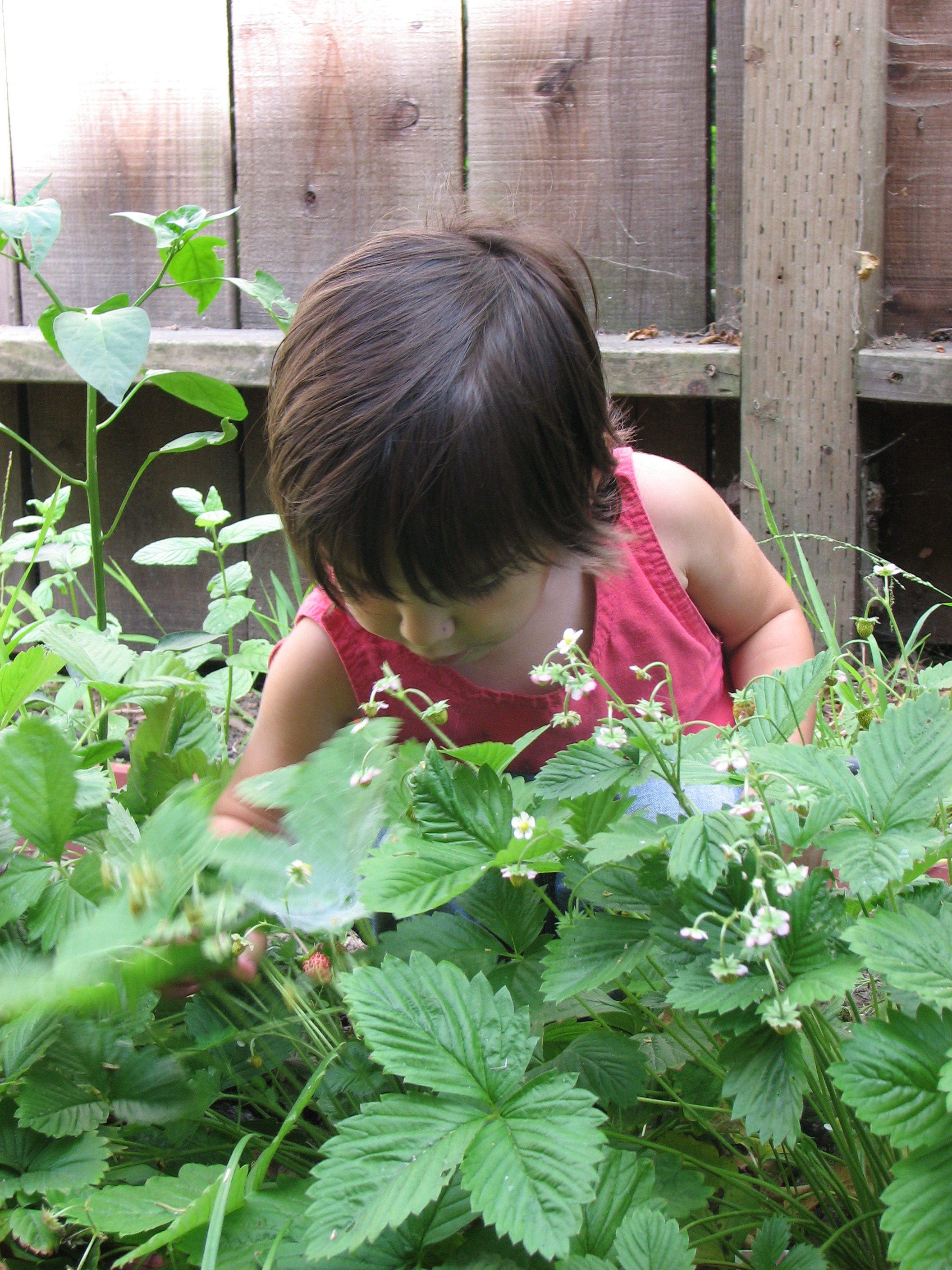I guess I just like watching things grow. There’s something about planting a seed, watching it grow, bloom and produce fruit that gives me a sense of comfort. I enjoy watching the progression from cotyledon to true sets of leaves, then pollination, and fruit. I like tending my plants daily, making sure they’re well watered. I even like watching the leaves wither and the seeds fall to the ground. It’s the cycle of life, the ever-turning wheel of almost constant change.
I like to nurture things (and I’m guessing you do too!) And I’ve found there are quite a few children who, if allowed, can become devoted to growing a bean plant (which will sprout in a wet paper-towel for goodness sake) or daisies, or pumpkins, or all three and more.
By fostering their interest in gardening you can enjoy time together tending the vegetables. This can meet your needs for peace, nurturing, and beauty while it meets your child’s needs for learning, discovery, and understanding where food comes from.
I’ve seen children hunting and cataloguing insects and birds they find in the garden. Digging for worms to examine. And I’ve seen them clamoring over a newly ripe lima bean, deciding among themselves some of the time and coming to me to mediate other times– who gets to eat the delicious bean today? I’m not kidding you– in our garden, at Berkeley Montessori School, the ripening of the lima beans was Shangri-La.
We grew carrots, lettuce (but sometimes the deer or rabbit ate it), kale, lots and lots of flowers. Flower arranging was one of the most popular activities in our classroom.
Don’t even get me started about apple season. We ate apples, cooked with them, watched the squirrels eat them, and used them in art projects. I wish every child on earth could have an apple tree.
When I was little, we had a cherry tree. It was my sweet delight, my haven, and a source of some concern, what with cherry trees growing out of people’s ears— or at least that’s what they told me would happen if I swallowed the pit.
I did eat so many cherries I gave myself a stomachache, but then I learned my limits, and just ate a few less. I can never remember anything more than curiosity and gentle suggestions from my mom that perhaps I’d had enough cherries.
Maria Montessori said that all children have an innate desire to learn and grow. I’ve seen that truth so clearly in my years working with young people. They’re voracious learners. The just need some stimulation– something to tend to– you know, a job (or their “great work” as we liked to call it). Otherwise known as a purpose. A garden can be just the motivation some kids need to take interest and responsibility.
So, this thing keeps happening in everything I write lately– I start off on one topic- gardening, and I end up on another– a child’s purpose. But then again, for your child this could be the same thing… I mean if my purpose is to nurture and support families, couldn’t his just as easily be to grow things?
So, here’s what I’m really saying– grow a garden if you and/or your child would enjoy that. And whether or not you grow a garden this summer, help your child find a new way to grow into his purpose– whether his purpose is to learn new skills, tend a garden, take care of animals, or whatever! If it lights him up, encourage him.
In a couple of weeks I’ll write more about how to encourage your child’s desire to cook and prepare food! You might not be the only one who loves to prepare nutritious and delicious meals for your family.
With love, Shelly
Oh, and I’d love to hear what you think. Please leave a comment in the box below. Thanks!



I seem to have become a kinder, gentler Mom in your memory, daughter of mine. I’m pretty sure I complained about cherry stains on your play clothes, but maybe I was as laid back as you recall. In any event, those memories, and those cherries, were sweet indeed!
So does that mean that we can now say that some kids eat candy like they’re lima beans? Ha! I wish my kids liked lima beans. Seems like they always want french fries and call that a vegetable.